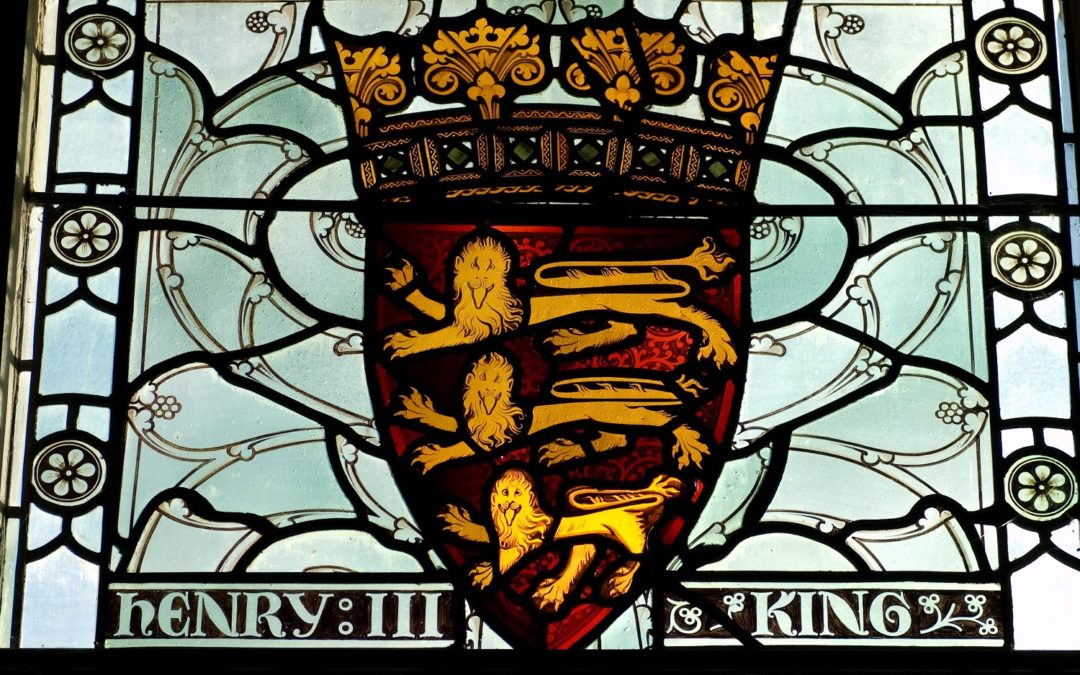By Adam Chapman
If you happen to be a medieval or early modern historian of the British Isles you probably won’t need to be told about the value of the Patent Rolls and why it’s good news that British History Online (BHO) is adding them to its digitised collection of Guides and Calendars—starting with those from the reigns of Henry III and Edward I, covering the period 1216 to 1307.
But if you’re not familiar with this resource, or happen to be interested in medieval or early modern Britain and want to know what the fuss is about, read on. The Patent Rolls and their counterpart, the Close Rolls (available to BHO subscribers from the reigns of Henry III to Henry VII) are two of the key records of English government. The Letters Close were private, formal communications while the Letters Patent are public communications of a monarch’s will.
In an environment where kingship had a strong personal element, the mechanisms of the medieval state needed to develop a means of recording these decisions in a relatively efficient fashion. Simply put, the Letters Patent are file copies of royal or, more accurately, government correspondence concerning the business of the state, compiled by the Chancery from the reign of King John onwards and maintained in the Tower of London. A medieval sent mail box if you like.
The National Archives hold the original enrolled Patent Rolls—amounting to 5790 rolls—and provide both a good introduction and a guide for researchers.
The Calendars of the original Patent Rolls are not medieval or early modern but late-Victorian in origin as printed summaries of the original rolls. Publication of the Calendars came in response to important 19th-century developments in the care and cataloguing of historic government records and a growing interest in constitutional history. The Calendars main series, covering the period 1232 to 1509 were published between 1891 and 1916. These Calendars provide very detailed summaries of the original documents. Invariably this careful précis serves as a wholly acceptable alternative to the original Patent (or Close) Rolls. The result is a window into the business of medieval and early modern government and the interaction of people with it.
The Calendars are therefore incredibly useful for understanding the mechanisms of English government and the interaction of all manner of peoples not only from within the English realm, which at various times stretched from the Scottish borders to Bordeaux, but also across Europe. Letters Patent were sent to individuals or corporate bodies—towns, cities or monastic houses, for example—and might address almost anything: from soldiers asking for personal favours or reward for service (as during the siege of Calais in 1346–7), to towns seeking royal recognition of their rights and privileges, or official appointments of all kinds.
Researchers frequently use the Calendars of the Patent Rolls in tandem with those of the Close Rolls since the communications are often linked: for example, a justice might be instructed to enquire into something directly (Close), but the nature of the enquiry might also be communicated publicly via a Letter Patent. Now, as British History Online adds the Patent Rolls to its existing coverage of the Close Rolls, historians of medieval and early modern England will be able to compare public and private government communications on the same topic.
More generally, anyone interested in prosopography (or biography come to that) might look at both the Patent and Close Rolls to track official appointments and other connections. Here’s one example, chosen at random from Henry III’s reign, referring to the career of Drew de Barentin—one of the king’s moderately high-level functionaries. In the Patent Rolls, 1247-58 he appears in membrane 14 while in the Close Rolls, 1237–42 (via BHO) index he appears in the text as Drogo de Barentin, and again by this name in the Close Rolls for 1242-47.
There is a certain amount of overlap in information, but the two sources provide more than the sum of their parts since they link de Barentin to the Channel Islands, where he was warden, the papal court where he was a messenger (it’s not immediately obvious whether he was any sort of priest) and to various other jobs and roles that he was called upon to exercise.
The example of Drew de Barentin, as he appears in the different forms of government correspondence, can be replicated many times over. Just about every publication on the theme of medieval history (including my day job with the Victoria County History) makes use of the Calendars of the Patent and Close Rolls.
If your Latin and palaeography are up to it, the Anglo-American Legal Tradition site has photographs of some of the actual Patent Rolls from the reign of Edward I (r.1272–1307) onwards. This membrane from TNA, C 66/92 (membrane 20), from November 1272, for example, includes references to a payment of 3000 marks (£2000) received from Llywelyn ap Gruffudd, prince of Gwynedd. The same membrane also provides a notice to the constable of Tickhill Castle (Yorkshire), letters to the prior and convent of Faversham (Kent), and an order to investigate wrongdoing in the town of Dunwich (Suffolk)—now lost to the North Sea.
Alternatively, you can now read the same extract of the Calendar of Patent Rolls (Edward I)—in a fully searchable form— via a university, research library or personal subscription to British History Online’s Premium Content. BHO Premium includes 200 volumes of printed primary sources, together with page scans from the published Calendars; these 200 volumes include the Close Rolls (for the period 1227–1509) and—in future updates from 2019—further Calendars of Patent Rolls covering later reigns up to that of Henry VII. In addition to these 200 Premium volumes, BHO provides free access to a further 1000+ volumes of primary and secondary sources, including (for medievalists) the Inquisitions Post Mortem, the Catalogue of Ancient Deeds and many, many more.
Dr Adam Chapman is Lecturer in Medieval History and Editorial Coordinator with the Victoria County History; his publications include Welsh Soldiers in the Late Middle Ages, 1282–1422 (2015).
is Lecturer in Medieval History and Editorial Coordinator with the Victoria County History; his publications include Welsh Soldiers in the Late Middle Ages, 1282–1422 (2015).

